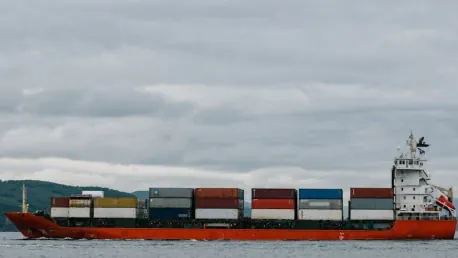In a significant move towards enhancing decarbonization compliance within the shipping industry, the FuelEU Maritime (FEM) regulation introduces stricter greenhouse gas (GHG) intensity requirements, which are set to take effect in January 2025. This new regulation is expected to not only reshape the maritime industry’s approach to fuel consumption but also necessitate a re-evaluation of existing protocols and contracts. The introduction of FEM brings about an era where the shipping sector must align with more robust environmental benchmarks set by governing bodies. To address the complexities arising from these regulatory changes and ensure contractual clarity, BIMCO has released the FuelEU Maritime Clause for Time Charter Parties 2024. This clause represents an important step towards helping industry players navigate the novel regulatory landscape and align with new environmental mandates.
A New Regulatory Landscape
The FuelEU Maritime regulation marks a considerable shift in the regulatory landscape, particularly in relation to decarbonization standards instituted by both the European Union (EU) and the International Maritime Organization (IMO). Leading maritime organization BIMCO has proactively responded by crafting a new carbon clause designed to provide a standardized solution for diverse scenarios encountered during time charter arrangements. Describing the urgency and complexity of FEM, BIMCO Deputy Secretary General and Director of Contracts, Stinne Taiger Ivø, emphasized that extensive consultations within the industry were essential to devising a practical and effective clause.
The primary goal of the subcommittee was to create a standard clause that would be applicable to most situations and commercial relationships within the shipping sector. Nicholas Fell, chair of BIMCO’s documentary committee, noted that for longer period charter parties, FEM would necessitate flexible compliance strategies such as pooling, banking, or borrowing. These strategies afford charterers the flexibility to address their compliance obligations in more adaptive ways. The collaborative process resulting in the clause included valuable contributions from an array of stakeholders, such as shipowners, charterers, P&I clubs, legal experts, and other parties involved in maritime operations.
Responsibilities and Compliance
According to the new clause, shipowners bear the primary responsibility for ensuring compliance with FEM. However, practical management duties may fall to third-party ship managers who handle the International Management Code for the Safe Operation of Ships and for Pollution Prevention (ISM) responsibilities. To promote clearer and more manageable contractual delineations, BIMCO is also developing a specific clause tailored for its ship management agreement, SHIPMAN. This initiative is intended to ensure that responsibilities, both contractual and practical, are clearly outlined and adhered to.
Legal insights provided by Antonia Panayides, a partner at Reed Smith, underscore the necessity of updating various shipping contracts to incorporate FEM requirements. She emphasized that the regulation adheres to the ‘polluter pays’ principle, ensuring that those responsible for GHG emissions are held accountable and financially liable. In her analysis, the time charter clause introduces a mechanism where charterers must reimburse shipowners for any compliance deficits they incur during the charter period. Conversely, if a vessel is redelivered with a surplus, the owners are obligated to pay the charterers for generating this surplus. Additionally, charterers are empowered to instruct owners on managing compliance through pooling, borrowing, and banking, thereby offering a degree of operational flexibility.
Impact on Fuel Choices and Emission Standards
The FEM regulation is poised to impact the shipping industry significantly, fostering the adoption of renewable and low-carbon fuels in international maritime transport, particularly throughout the EU. FEM sets forth stringent well-to-wake GHG emission intensity requirements for vessels weighing more than 5,000 gross tonnes that operate within EU waters. For journeys to or from the EU, only half the energy used falls under FEM’s requirements, while for intra-EU and European Economic Area (EEA) voyages, the entire energy usage is governed by FEM mandates. The regulation’s scope not only covers CO2 but also methane, with increasing intensity caps defined to escalate every five years. For instance, a 2% reduction from the baseline is expected by 2025, growing to an 80% reduction by 2050.
FEM’s focus centers not just on the volume of fuel consumed but rather on the type of fuel used, prioritizing those with minimal GHG footprints. Consequently, traditional energy efficiency measures have a limited impact on compliance but remain valuable in reducing the economic burden of adopting greener alternatives. This regulatory shift aims to steer maritime fuel consumption away from fossil fuels and towards sustainable alternatives, essentially driving the industry to re-evaluate its fuel choices and embrace more eco-friendly practices.
Compliance Strategies and Penalties
Eirik Nyhus from DNV has highlighted that non-compliance with FEM regulations for two consecutive years could result in severe penalties, such as banning ships from EU waters or detaining them until compliance is achieved. Additionally, fines are anticipated to be a common consequence of non-compliance, thereby underscoring the importance of adhering to the new standards.
Given that most vessels currently using liquid fossil fuels are expected to be non-compliant from the regulation’s commencement, operators have a few potential strategies to navigate these challenges. One strategy involves adopting sustainable alternatives like biofuel, though the present supply may not meet initial demand. Another strategy entails compliance pooling with other vessels through the EU’s existing Thetis system, facilitating the trade of compliance units, banking future credits, and borrowing from future allowances with accrued interest.
Paying penalties is another compliance strategy that operators might initially consider, particularly when the availability and costs of alternative fuels prove challenging. Though penalties are designed to be dissuasive, this option remains a legitimate approach, reflecting the regulation’s flexibility in accommodating different levels of readiness among operators.
Proactive Compliance Monitoring
The new clause mandates that shipowners are primarily responsible for adhering to FEM regulations, although third-party ship managers may handle the ISM responsibilities, assisting with the practical management tasks. To clarify contractual roles, BIMCO is developing a specific clause within its ship management agreement, SHIPMAN, to ensure that both practical and contractual responsibilities are well-defined and followed.
Antonia Panayides, a partner at Reed Smith, highlights the critical need to update various shipping contracts to meet FEM requirements, emphasizing the ‘polluter pays’ principle, which holds those responsible for GHG emissions accountable and financially liable. She points out that the new time charter clause establishes a system where charterers must compensate shipowners for any shortfall in compliance during the charter period. Conversely, if the vessel is redelivered with an excess of compliance credits, the shipowners are required to pay charterers for this surplus. Charterers can also direct owners on handling compliance through pooling, borrowing, and banking, giving them some operational flexibility.








